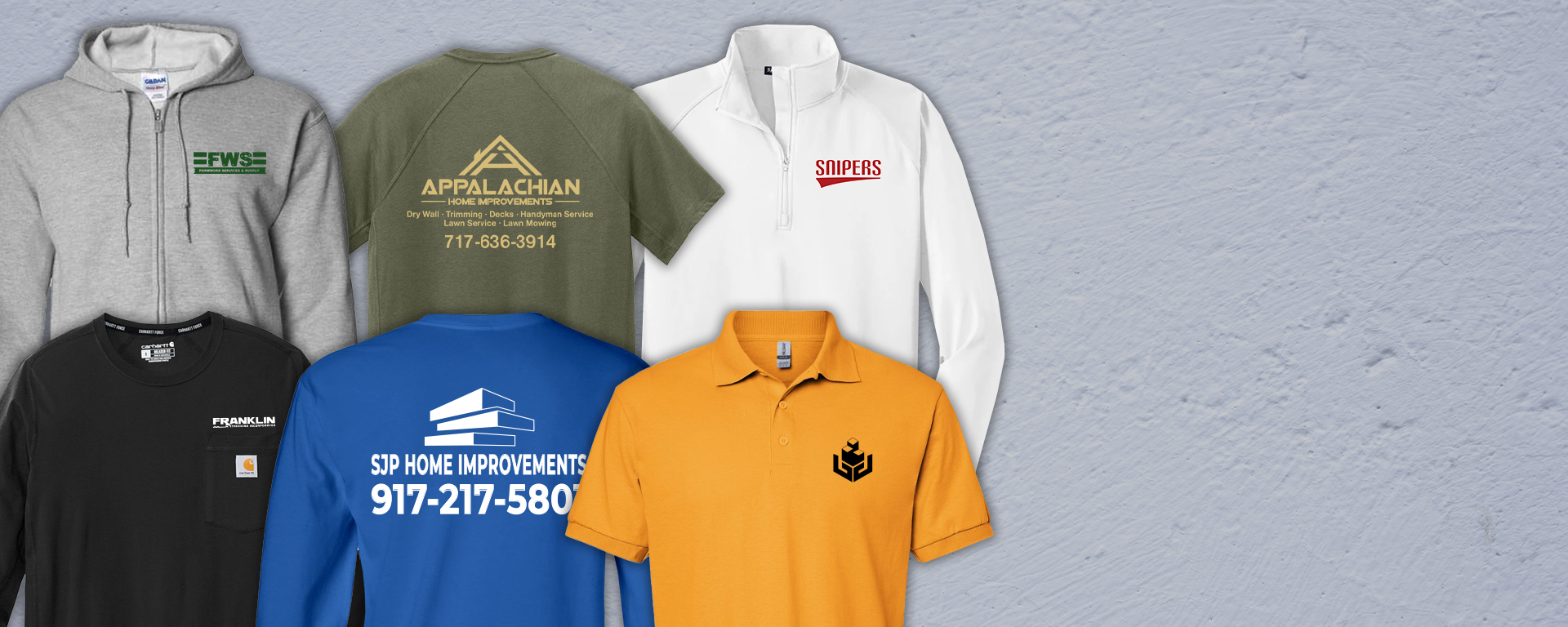Branded Clothing and the Role of Fabric in Defining Your Silhouette
Branded Clothing and the Role of Fabric in Defining Your Silhouette
Blog Article
The Relevance of Sustainable Garments: How It Influences the Environment and Your Wardrobe
Sustainable clothing is significantly recognized for its important duty in minimizing the ecological influence of the quick fashion business. By focusing on environmentally friendly materials and honest manufacturing techniques, it resolves pushing environmental concerns. This shift not only benefits the world however additionally influences customer options, resulting in an extra thoughtful strategy to closet monitoring. Understanding these dynamics elevates crucial questions concerning style's future and individual responsibility fit it.
The Environmental Footprint of Quick Style

Benefits of Sustainable Products
Lasting materials offer substantial benefits, specifically through environment-friendly textile choices that lessen environmental injury. These products likewise show sturdiness and durability, reducing the requirement for constant substitutes. Therefore, they add to an extra lasting apparel industry and promote accountable customer behavior.
Eco-Friendly Textile Choices
While the garment industry has actually long been connected with quick patterns and environmental injury, the surge of environment-friendly material selections offers a transformative possibility. Sustainable materials such as natural cotton, hemp, and Tencel have actually gotten appeal because of their reduced environmental influence. These fabrics are commonly produced without dangerous pesticides and call for much less water, lowering their carbon impact - Branded Clothing. In addition, lots of eco-friendly materials are biodegradable, adding to a round economic climate by minimizing waste. Choosing sustainable products not just sustains eco responsible techniques yet additionally advertises healthier communities. As customers come to be a lot more familiar with their buying power, the need for environmentally friendly materials encourages brands to introduce and take on more sustainable production techniques, ultimately benefiting the planet and future generations
Toughness and Longevity Advantages
Many consumers are significantly acknowledging the resilience and long life advantages of lasting products in their apparel selections. Unlike traditional fabrics, lasting products such as organic cotton, hemp, and recycled polyester are engineered to withstand damage, leading to garments that last longer. This lowered regularity of substitute not only saves consumers cash over time yet additionally lessens waste generated by fast fashion. Additionally, lasting clothing typically uses environmentally friendly production methods that improve textile toughness, adding to a reduction in the overall carbon impact. By purchasing durable clothing, consumers can grow a more sustainable closet while taking pleasure in high-grade items that preserve their visual and capability with time. As a result, durability and longevity stand as crucial benefits of choosing sustainable materials.
Decreasing Waste With Sustainable Practices
Reducing waste in the fashion business can be attained with ingenious methods such as upcycling and repurposing materials. Additionally, adopting minimalist wardrobe techniques urges consumers to prioritize top quality over quantity, eventually reducing garments usage. Together, these approaches add greatly to a much more sustainable garments design.
Upcycling and Repurposing Materials
Upcycling and repurposing materials have become cutting-edge techniques in the fashion business, transforming disposed of fabrics into valuable brand-new products. This approach not just minimizes waste however additionally urges imagination and uniqueness in garments style. By taking old garments and products, designers can create unique items that reflect individual design while minimizing the demand for brand-new sources. In addition, upcycling usually requires less energy and water contrasted to conventional production procedures, substantially decreasing the ecological footprint of fashion. As customers come to be a lot more knowledgeable about sustainability, the popularity of upcycled garments remains to rise, promoting a circular economic situation. Ultimately, these practices add to an extra lasting future, where style focuses on environmental health and wellness over fast manufacturing and usage.

Minimalist Closet Techniques
As individuals progressively seek to minimize their ecological influence, taking on minimal wardrobe techniques has actually obtained traction as a reliable technique to lasting style. These approaches highlight top quality over quantity, motivating consumers to curate a smaller sized collection of versatile, sturdy clothing. By concentrating on timeless pieces that can be mixed and matched, individuals can lower the frequency of acquisitions and eventually decrease waste.Additionally, minimalism promotes conscious intake, urging buyers to review like it the environmental and ethical implications of their selections. This technique not only cultivates an extra lasting way of living but additionally streamlines day-to-day decision-making pertaining to clothing. As people embrace minimalist principles, they add to a fashion society that values sustainability and liable consumerism, ultimately causing an extra eco-conscious culture.
The Function of Ethical Labor in Sustainable Style
While numerous customers are progressively mindful of the environmental consequences of their garments options, the value of honest labor practices in lasting style can not be ignored. Moral labor includes reasonable wages, safe working problems, and respect for employees' civil liberties, forming the foundation of responsible style production. Brands that focus on honest labor not only uplift neighborhoods yet likewise set a criterion for liability in the industry.Moreover, the assimilation of moral techniques fosters openness, enabling customers to make enlightened options concerning their purchases. This practice contrasts greatly with quick style's unscrupulous labor models, which typically focus on profit over people. By sustaining business dedicated to moral labor, customers contribute to a system that values human dignity together with environmental sustainability. Consequently, honest labor is not just an add-on; it is necessary to the broader goal of sustainable style, making sure that the quest for eco-friendliness does not come at the expense of civils rights.
The Effect of Sustainable Apparel on Carbon Emissions
Sustainable clothes has the possible to considerably reduce carbon discharges associated with the fashion market. Traditional garment production adds significantly to greenhouse gas exhausts, primarily because of energy-intensive manufacturing procedures and using non-renewable resources. On the other hand, lasting style concentrates on environment-friendly products, such as organic cotton or recycled fibers, which often require much less power to produce.Moreover, sustainable brands have a tendency to take on a lot more effective manufacturing methods, reducing waste and decreasing total emissions. By focusing on toughness and timeless layout, lasting garments motivates consumers to get much less frequently, more reducing the carbon impact connected with overconsumption.Additionally, numerous sustainable brand names are committed to transparency in their supply chains, making it possible for consumers to make enlightened selections that align with their values. Inevitably, moving in the direction of lasting apparel can lead to a significant reduction in carbon exhausts, adding to a much healthier earth and a more lasting future for the apparel industry.
Supporting Regional Economic Climates With Sustainable Choices
The shift toward lasting garments not only addresses ecological concerns however additionally significantly advantages neighborhood economic situations. By selecting lasting fashion, consumers typically sustain small businesses and local artisans, boosting area resilience. These ventures commonly operate a smaller scale, focusing on workmanship and ethical techniques over mass production.Investing in locally made sustainable clothes fosters work development and boosts financial growth within areas. As customers become much more mindful of the environmental effect of their purchases, they progressively seek out items that mirror their values. This demand encourages regional makers to embrace sustainable techniques, adding to a circular economy.Moreover, sustaining regional services minimizes transportation discharges, lining up with eco-conscious customer actions. The interconnectedness of lasting garments and neighborhood economic situations underscores the necessary function that individual selections play in advertising both ecological and i was reading this financial health and wellness. By cultivating these neighborhood connections, areas can flourish while likewise working in the direction of a much more lasting future.
Changing Your Wardrobe: Tips for a Sustainable Wardrobe
As people look for to reduce their environmental effect, changing a wardrobe into a lasting wardrobe ends up being a vital step. One reliable strategy is to examine existing clothing, keeping only items that are put on regularly which straighten with sustainability objectives. Focusing on top quality over quantity is vital; buying sturdy items from green brand names can considerably lower waste.Additionally, incorporating pre-owned items can take a breath brand-new life right into a closet while decreasing environmental damage. Organizing clothing swaps with pals or giving away unused items can better advertise sustainability.When purchasing, people ought to look for products that are natural, recycled, or biodegradable, and stay clear of rapid style merchants - Branded Clothing. Practicing mindful consumption by thoughtfully taking into consideration each purchase can contribute to a more lasting way of living. By applying these pointers, one can develop a wardrobe that shows personal style while sustaining ecological stewardship
Often Asked Questions
Exactly How Can I Identify Sustainable Clothes Brands?
To determine lasting garments brand names, one should research products utilized, look for certifications like Fair Profession, wikipedia reference and take a look at the brand name's transparency concerning their manufacturing procedures, labor practices, and ecological influence, guaranteeing ethical and green techniques are prioritized.
What Are the Prices Connected With Lasting Style?
The prices connected with lasting style can differ significantly. Higher production expenses, honest sourcing, and green products usually lead to boosted retail rates, which may deter some customers while attracting ecologically conscious customers.
Can Sustainable Clothing Be Trendy and fashionable?
Sustainable clothes can certainly be trendy and stylish. Developers significantly prioritize cutting-edge products and ethical production methods, proving that style and sustainability can exist side-by-side. Customers currently have varied alternatives that mix aesthetics with ecological consciousness.
Exactly How Does Laundering Clothes Affect Their Sustainability?
Cleaning garments considerably impacts sustainability by consuming water and power, contributing to pollution, and creating microplastic launch. Regular cleaning can deteriorate materials, reducing their lifespan and raising the requirement for replacements, eventually aggravating ecological problems.
What Is the Life Expectancy of Lasting Clothing Contrasted to Rapid Fashion?
The lifespan of lasting apparel generally exceeds that of quick fashion products, commonly lasting numerous years as a result of high quality materials and craftsmanship. On the other hand, fast style garments may deteriorate swiftly, necessitating more constant substitutes. Sustainable clothing is increasingly acknowledged for its crucial role in reducing the ecological impact of the rapid style sector. While lots of consumers are progressively mindful of the environmental effects of their clothes selections, the significance of moral labor methods in sustainable style can not be forgotten. Branded Clothing. Sustainable garments has the potential to significantly minimize carbon exhausts connected with the fashion sector. In comparison, sustainable fashion concentrates on green materials, such as natural cotton or recycled fibers, which typically require much less power to produce.Moreover, sustainable brands have a tendency to embrace a lot more efficient manufacturing practices, reducing waste and reducing general emissions. By prioritizing resilience and ageless layout, sustainable clothes encourages customers to purchase much less often, more minimizing the carbon impact connected with overconsumption.Additionally, numerous lasting brands are committed to openness in their supply chains, allowing customers to make informed options that align with their worths
Report this page